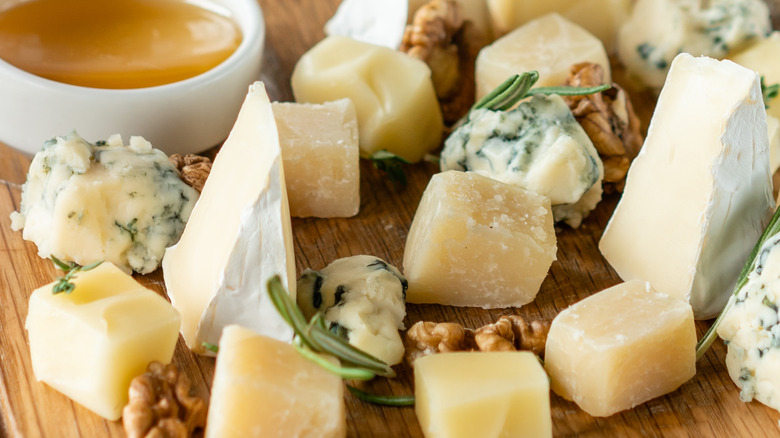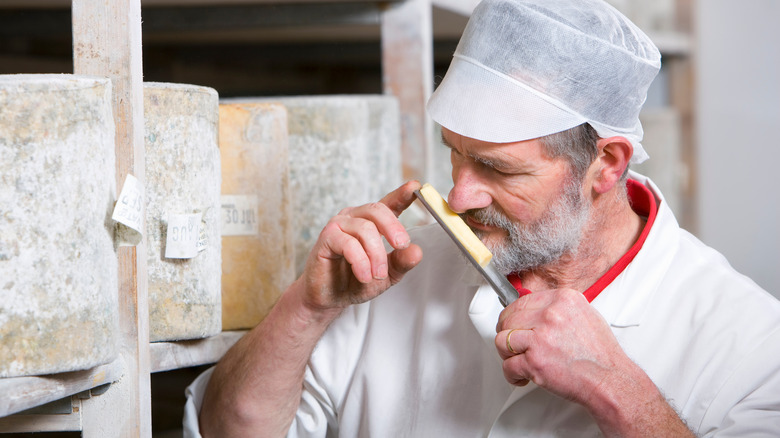You Should Always Smell Cheese Before Eating It. Here's Why
Cheese, glorious cheese! The iconic dairy product has been consumed by humans for millennia — presumably as far back as 8000 BC, according to The Spruce Eats. Cheese, as we all know, can be sold or served in a variety of forms — cubed, shredded, grated, sliced, melted, crumbled, roped, you name it — and eaten in a seemingly countless number of dishes — sandwiches, burgers, pizza, pasta, salads, desserts, nachos, charcuterie boards, and of course, by its plain ol' self.
With so many varieties of cheese around the world, each offers a unique flavor profile, aroma, character, and recommended use. For example, cheddar, the most popular cheese in America, per Wisconsin Cheese, typically sports a golden-yellow or orange hue, a firm texture, a sharp, earthy, flavor, and is often incorporated into sandwiches, paired with fruits and vegetables, or enjoyed as snackable curds.
It goes without saying that, for most people, eating cheese is fun and euphoric. But is there a "right" way to eat cheese? The short answer, according to culinary pros and cheesemongers, is yes. And the recommended method involves more than just your taste buds.
Our sense of smell directly affects how food tastes
While we've probably all "inhaled" a meal at some point, let's take things a bit slower here. As many of us may recall from biology class, our senses of smell and taste, while separate, are directly related to one another. According to Scientific American, smell plays a vital role in the overall comprehension of food's flavor.
As Liz Thorpe, a renowned cheese expert and founder of The People's Cheese, explains, "A lot of the tastes of food — and cheese is no exception — are not determined by your tongue, but by your nose. Your sense of smell kicks in while chewing, but continues to direct your impression of flavor long after you've swallowed."
Wisconsin Cheese — the state that boasts the largest production of cheese in the U.S. — suggests keeping a bit of space between your nose and the cheese when taking a whiff, especially with cheeses known for having a more pungent scent like Limburger, Gorgonzola, and Camembert. If you're able to waft the aroma toward your nostrils with your free hand, you'll be able to more easily detect the cheese's distinctive notes, such as nutty, floral, sweet, spicy, earthy, or milky.
Once your olfactory system is able to identify the main elements of the cheese, take a bite and fully savor the experience. The Kitchn recommends exhaling through your nose as you swallow the cheese to help trigger the retro-nasal effect — the sensory perception that creates flavor.

